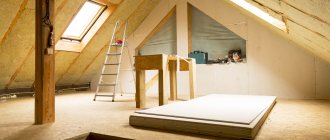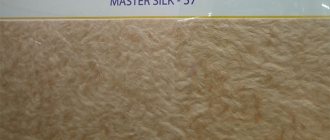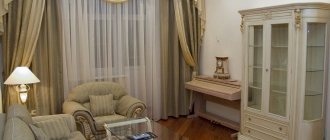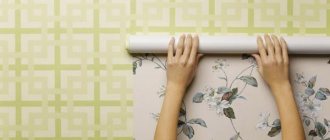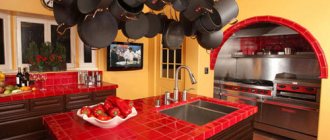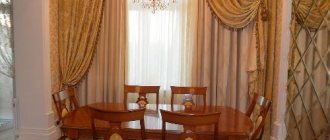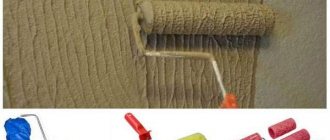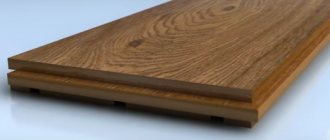Why do you need a garage in a country house?
The first question that arises is: is a garage necessary at all? There are many advantages to building a garage in a private home:
- First of all, this is the safety and storage conditions of the car.
- It's easier to start the car in a warm box in winter
- There is a place to store tools and spare parts, as well as consumables.
- Convenience of getting into the house
How do you decide if you want to decorate your walls cheaply?
We looked at the most common and popular finishing materials that are used in the interior design of garages. If your main goal is to save your own savings and equip your garage in the shortest possible time, then the following will suit you: lining, siding, PVC panels.
The most inexpensive finishing options include plastering the walls, but it will take a lot of free time.
A garage for a car enthusiast is an important room that requires proper finishing. In addition to vehicles, other important items can be stored here: spare parts for cars, tools, household items that are a pity to throw away. All this requires reliable storage. The article will tell you what non-standard ways to decorate a garage from the inside.
Finishing the inside of the garage is necessary to preserve heat in the room and protect it from dampness. Without finishing work, the humidity in the room will always be elevated. Due to dampness:
- The process of rotting the car begins.
- Rust appears on spare parts for it.
- Tools deteriorate.
- Other things become unusable.
Finishing works not only create an aesthetic appearance in the garage, they improve the hygienic conditions in it. Working in a warm, well-maintained garage will be more convenient, comfortable and safer.
Requirements for finishing materials
You cannot purchase the first material you come across for finishing the inside of the garage. This is due to the increased safety rules in it. It contains combustible, flammable materials, and any spark can lead to unforeseen consequences. The material requirements for garage interior decoration are presented in the table:
Alternative materials for wall decoration
Standard garage wall finish:
- Plaster.
- Tile.
- Lining.
But besides this, you can use other options, such as:
- Siding
. It is mounted, like the lining, on the sheathing, but is attached only horizontally, which requires that the sheathing be installed vertically.
Siding can be from:
- Plastic.
- Metal.
- Asbestos cement.
Tip: Plastic or metal should be used for interior lining. Outside – asbestos-cement siding.
The technology is similar to the installation of plastic lining, oriented horizontally:
- The starting profile is installed below.
- Siding plates are inserted.
- The plates are screwed from above to the sheathing with self-tapping screws.
- This technology is repeated all the way to the top: the edge of the top plate is inserted into the groove located on the bottom plate.
Advice: All hanging cladding materials mounted on the sheathing, except metal, cannot be fixed rigidly. A small damping gap should be left around the perimeter of the wall, which will prevent the cladding from deforming during seasonal temperature fluctuations.
- Profiled sheet
. The metal thickness is selected from 0.4 - 1.2 mm.
Most often the material is zinc coated. But for the garage it is better to purchase sheets painted with powder paint. Their advantages:
- Beauty.
- Reliability.
- Long service life.
Theoretically, the corrugated sheet can be mounted directly on the wall, but it is better to mount it on the sheathing. In this case, the sheets are fixed with self-tapping screws. The use of rubber or polymer press washers protects the metal from corrosion.
What types of garages are there?
Currently, several options for installing garages on the site are used:
- Detached garage
- Attached to one wall of the house
- Indoor
Each option has its pros and cons, let's look at some of them to help you make your own choice.
Expert commentary
If you have a question about how to cover the walls in the garage, then there will be many answers. There are several options, there is no perfect solution. Some materials are not susceptible to moisture, but are difficult to install, others are susceptible to fire, etc. The choice falls on the shoulders of the owner. Decide what is more important to you: safety, appearance or durability of the material and buy based on your preferences.
The most common finishing option is lining, plastic or wood. The appearance of the material is the most aesthetic. Wood is easy to work with: nails are easily driven into it and do not deform the surface, which is important for a garage. You still need to try to install something on plastic. But it does not support combustion.
The cheapest finishing option is plaster. But such a process requires at least some skills and takes a long time to install. Although it is convenient to practice in the garage before future renovations in the apartment. Ceramic tiles are the most convenient maintenance option. Removing dirt from it is easy and simple, but, unfortunately, it is afraid of impacts. If you accidentally hit a surface with a tool, a chip may form.
Another selection criterion is fastening. If you attach the material directly to the wall, then you will not be able to insulate the garage. But when installing the frame, you can lay thermal insulation with any convenient material. But do not forget that the garage must have a ventilation system. Closing the vents completely can be life-threatening due to carbon monoxide from the machine.
Every car owner spends a significant part of his time in the garage, and the issue of a comfortable pastime in this case becomes relevant. You can make your garage more comfortable by decorating the interior walls. Read an overview of the characteristics of the types of inspection pits in the garage on this page.
The photo shows the process of finishing the walls in the garage
Sheathing features
Due to the specifics of the functional use of the room, the finishing material for lining the walls of the garage from the inside must have a number of certain qualities and performance properties:
- the finishing material, first of all, must have not only decorative properties, but also perform the practical function of protecting the wall surface from various types of harmful influences, for example, from moisture or temperature changes;
- the finishing material must be resistant to specific substances characteristic of the process of servicing and operating a vehicle (gasoline, motor oil, etc.);
- finishing material must be fireproof;
- the finishing material must be resistant to mechanical stress;
- in cases where the garage is not heated, the finishing material must be resistant to subzero temperatures;
- in addition, the finishing material should not absorb odors and accumulate various pollutants, and in case of contamination, it should be easy to clean;
- The finishing material should be characterized by a long service life without loss of its original qualities.
Pros and cons of garages attached to the house
The main positive qualities of the house attached are:
- Cheaper estimate, no need to build one of the walls.
- Easy to get into the house
- Ease of communication
- Takes up less space than a detached garage
But there are also disadvantages:
- reducing the thermal insulation of the house
- additional dirt especially in the autumn-spring period of the year
Be that as it may, the garage is a source of noise and a fire hazard.
What plaster is suitable for the garage facade: cheap and high quality
If the main purpose of plastering the garage facade is aesthetics, the walls are smooth, there are no cracks, you can use almost any facade plaster, since they are all recommended for application in a layer up to 2 mm thick. If there is significant deformation of the wall and other obvious deficiencies, a thicker layer of protective coating is required. In such cases, you should opt for M150 sand concrete. This is a ready-made dry mixture, which includes fine-grained sand, Portland cement, lime and additives responsible for shrinkage and hardening of the screed.
Using sand concrete, you can do without installing a mesh if the planned layer of plaster does not exceed 30 cm. You can also use other plasters, cement, gypsum or lime, to decorate the outside of the garage. Let's tell you a little about the features of each of them.
Cement
From the name of the material it is clear that the main element is cement. This is a universal material that is perfect for both starting and finishing work.
The main advantages of the material include:
- environmental friendliness. The mixture consists of ingredients of natural origin, which minimizes the possibility of mold;
- protective function. The surface with cement plaster becomes much harder and stronger, the structure becomes more stable, in addition, the layer of plaster prevents the spread of fire in the event of a fire;
- noise and heat insulation;
- excellent adhesion to various types of wall surfaces;
- durability. If all the rules for using the material are followed during repairs, a wall with cement plaster can last up to 50 seasons without repair!
The disadvantages of cement plaster include:
- fragility of the finished mixture. Such a ready-made mixture must be used within 1-2 hours, otherwise the solution will begin to harden and become unsuitable for use;
- cement mixtures are not suitable for work in heat or cold; they are used only at air temperatures from 5 to 30 degrees;
- In order for such a coating to last as long as possible, an additional finishing layer of putty or a decorative layer must be applied on top of it;
- the cost of such material is quite high.
Plaster
The advantages of gypsum plaster are:
- environmental friendliness;
- low material weight. The layer of plaster will be light and will not create additional load on the building;
- After the plaster has dried, the surface will be perfectly smooth and without cracks;
- fungus does not grow on the surface of gypsum plaster;
- the gypsum surface of the wall helps maintain a normal microclimate in the room;
- heat and sound insulation;
- Gypsum plaster is consumed much more economically than cement plaster. It can be applied in a fairly thick layer. You also don't have to use a mesh.
- this type of plaster is suitable for rooms with high humidity;
The main disadvantage of gypsum plaster is its high price.
Limestone
Lime plaster is not used often, but it has a number of serious advantages. The appearance of walls plastered with this material is excellent, as is their strength. But the layer of material that can be applied can reach 100 mm.
Advantages of the material:
- the finished mixture of lime plaster after application hardens and acquires the strength of natural stone;
- lime plaster fits perfectly on walls made of various materials, including adobe, adobe and even wood;
- due to the plasticity and softness of the material, it is very easy to level and rub;
- this is the cheapest plaster;
- The prepared solution can be stored for quite a long time.
Other modern materials
An excellent material for exterior wall finishing can be called putty. Its disadvantage is its rather high cost. Therefore, it is usually used only as a top layer on already smooth walls. And the elimination of surface imperfections and insulation are achieved through the use of additional materials, such as foam plastic, etc.
Pros and cons of garages built inside the house
Internal garages have their advantages:
- High safety and ease of access to residential premises
- Save space on the site.
The negative aspects include:
- space is taken from residential premises
- The disadvantages of attached garages are more apparent here.
After weighing the pros and cons, the home owner will decide which type of garage to choose.
Insulation of metal garage walls
Most often, to insulate a garage, the exterior walls are lined with foam plastic.
This option is the most optimal, taking into account its performance characteristics and cost. However, if additional stoves are used to heat the garage, or there is other equipment that can heat up to high temperatures, then in this case the foam should be replaced with mineral wool. The procedure for external insulation of garage walls with foam is as follows: First of all, ventilation should be installed in the garage room. This will require the installation of an additional fan capable of causing forced air circulation. Thanks to well-equipped ventilation, it is possible to prevent the formation of cracks in sheets of material that appear due to the presence of a strong temperature difference in the room and outside its walls in winter. Next, the walls of the garage from the outside are cleaned of debris, dust, and old coating.
If cracks or other surface defects are present, they should be repaired using a plaster mixture. The cleaned surface should then be primed. Usually one coat of primer is sufficient, however, in some cases an additional layer of primer may be required. Thanks to the primer layer, the adhesion of the working surface with the adhesive composition on which the foam sheets are attached increases. Next, the material for wall cladding is selected. It is necessary to take sheets of foam plastic that have high strength and a surface thickness of at least 50 mm. An adhesive composition is applied to the surface of each sheet of foam plastic using a spatula. The material is laid in a checkerboard pattern.
Start laying from the bottom row. The foam plastic should be installed so that the gaps between the sheets of material are minimal. When the glue dries, the foam sheets should also be secured with dowels. Next, the surface of the foam is covered with a putty mixture. To do this, use putty reinforced with fiberglass mesh.
The mesh is “pressed” into the putty layer. The last step is to apply a decorative putty layer. For this, high-quality facade plasters are used. Then the working surface is painted with facade paint. The paint and varnish mixture should be applied in 2-3 layers.
Using the same technique, the garage is insulated with mineral wool, siding, moisture-resistant gypsum fiber sheets, and plastic.
In this case, siding, plastic and drywall are attached to a pre-made metal frame. Next, we will look at how to insulate a garage cheaply from the inside: First of all, as in the case of insulating walls from the outside, you should arrange forced ventilation in the garage using a fan. Thus, there will always be fresh air in the room. Next, the working surface should be cleaned of dust, dirt, and remnants of the old coating. Then a plasterboard frame is made, onto which the facing thermal insulation coating will later be attached. Drywall sheets are attached to UD and CD profiles, which are installed at a distance of 250 mm from each other.
Instead of drywall, you can use asbestos fiber. Mineral wool or other cotton insulation is used as a heat insulator. They should be compacted into the gap between the garage wall and the drywall sheets. A vapor barrier is laid on top of the heat-insulating layer. A membrane is suitable as a vapor barrier. It is mounted close to the mineral wool layer. Next, the lined surface is plastered and covered with heat-insulating paint. If necessary, the cracks formed during the installation of plasterboard sheets should be filled with foam. If you are interested in the question of how to choose insulation for garage walls, which will be an alternative drywall, then consider also the options of applying insulation paint, foamed polyurethane to the surface, or the possibility of attaching foam sheets to the walls.
Is it possible to build a garage with your own hands?
Many homeowners ask the question: is it possible to build a garage in a private house with their own hands? To answer this question, it is necessary to decide what resources and skills the owner of the site has.
And how good a project it is. When thinking about the project, you should pay attention to the photo of the garage in a private house that it contains.
Garage Floor Finishing
Concrete flooring is the most common and reliable option for a garage; when choosing it, you can simultaneously solve the problem of effective heating if you choose a heating option (water, electric) and install it into the coating. The concrete surface can be painted with special paints: polyurethane, acrylic, epoxy. However, this finishing option will require regular repainting a couple of times a year, depending on the intensity of use of the garage.
Garage Floor Finishing
A modern option is to decorate the garage with your own hands using slag-slabs: impact-resistant, durable material in gray or white. Popular finishing options:
- ceramic tiles are a beautiful solution that will strengthen the surface and eliminate the problem of excessive dust in the garage. Additional advantages of the material are easy maintenance, water resistance, resistance to mechanical damage and abrasion, if samples of wear class V are laid. You can choose a particularly durable material - porcelain stoneware or frost-resistant GRES type;
- Self-leveling floors on a polymer or cement base will reliably protect the floor from negative influences, form a solid, perfectly smooth surface without flaws (seams) and will last 45 years or more. The best option in terms of quality/price ratio is polyurethane or epoxy industrial self-leveling floors: antistatic, frost-resistant, wear-resistant, fireproof coating, resistant to chemicals and vibration.
A beautiful floor covering is wear-resistant, high-quality linoleum, but such finishing is an expensive solution, although it will save the car enthusiast from the well-known disadvantage of a concrete floor - stains under the car in rainy weather. Wooden flooring is a short-lived option with a service life of 5 years and the only advantage is its low cost. Finishing such a base is impractical - it is recommended to perceive a wooden floor as a temporary solution to be replaced with a rough concrete one.
Garage dimensions
When placing an order for a garage project, you need to determine the technical specifications for its development. One of the most important questions that needs to be answered is the size of the garage in a private house.
So the answer will depend on the following factors:
- number and size of cars owned by the owner of the house
- What else do you plan to store in the garage?
- Will there be a workshop for car repairs?
Main finishing options
The modern building materials market offers many options for garage interior cladding.
As a rule, garage owners resort to classic sheet and piece materials of biological origin. This is the long-known plywood, folding or fiberboard. At the same time, the industry has long established mass production of alternative materials: wooden and metal lining, corrugated sheets, polymer panels and siding. Why not do some finishing? It is only important to take into account the operating conditions of the garage premises, the material of the walls and other design features.
Along the way, we will consider options for covering a garage made of reinforced concrete, iron, wood, brick and foam block walls. In this regard, it is important to select the cladding material so that it meets the necessary requirements for the safe operation of the garage. Given the special nature of garage buildings, its future finishing must meet the following rules:
- Be resistant to mechanical and chemical influences;
- Not subject to destruction from exposure to air temperature changes;
- Be non-flammable and, if possible, not emit harmful substances;
- Easy to maintain and have high quality aesthetic properties.
Clapboard finishing
Wooden lining is ideal for a technical room
This technology has been used for decades, but perhaps only now has it acquired special significance. In addition to the wooden lining itself, there is also its iron analogue. In several respects it is superior to classical material - for example, in impact resistance. Where metal lining can most often be used is in rooms with high humidity. Wooden trim is recommended in utility rooms - for example, in a technical room located under or above the car parking area.
The lining installation technology in this case will not differ in anything special. However, it is important to understand that there will be slight difficulties in fastening the guides in metal walls, and the work time for drilling holes for hangers will also increase. At the same time, for walls made of foam blocks or bricks, this option is much more preferable than finishing with plastic panels. Any drill will cope with the task of fastening, self-tapping screws easily fit into the foam block, and there are special dowels for brickwork.
Profiled sheet
Sheathing with profile sheets is often used for industrial purposes to finish the inside of large garages and boxes. But nothing prevents you from using the same technology in small garages. It is advisable to use a profiled sheet with a shallow wave and a wide pitch directly in parking areas.
This method has an undeniable advantage - high installation speed
. In addition, the profiled sheet is unpretentious in operation, additionally protects against blowing, has rich colors and allows you to insulate the walls.
The corrugated sheet is attached with self-tapping screws to the guides, like lining, and is light in weight. Another interesting thing is that now the profile is stylized to match different wood textures. So if you are planning to arrange a basement or technical room, consider this option. In addition, wall metal began to be equal in price to wooden lining. For walls made of brick and foam block, corrugated sheets are best suited.
Use of plastic panels
Plastic panels are an ideal option for a modest budget
As a rule, plastic panels have low impact resistance, but from an aesthetic point of view they have no equal. It is not recommended to decorate walls with them in areas where cars and motorcycles are parked directly, since the material is flammable and can emit toxic gases if it catches fire or gets very hot.
In general, plastic panels are the most budget option.
In terms of speed and complexity of installation, they are slightly inferior to corrugated sheets. The fact is that the panels have special joints that are not always even, especially when installed along sparse guides. Alternatively, the panels can be installed using foam if the garage walls are made of foam block, reinforced concrete or brick. If the walls are smooth, it is better to use liquid nails.
Siding for interior walls
A strict practice has long been established for this type of material - it is used mainly for external work when finishing facades. Therefore, arranging the interior space of a garage with siding is only a special case.
Yes, from an aesthetic point of view, this material has a special architecture, but it is less practical for interior design. Soot, dirt and oil traces are practically not erased from vinyl. However, siding, if it is made of metal, looks good on open garage areas or spacious boxes with high ceilings.
Video: How to line a garage from the inside
Sheathing garage walls requires a preliminary examination of the walls, and in some cases, design of the premises. The most popular materials are lining and corrugated sheets; polymer panels are used a little less frequently due to their high fire hazard. But the final choice in any case remains yours.
You can cover the walls inside the garage with different finishing materials.
The most common and popular are:
- siding;
- PVC panels;
- ceramic tile;
- plastic lining;
- natural or artificial stone.
Applying plaster to walls is a proven and most inexpensive method. But the process itself is long and laborious.
The advantages of this finish include:
- safety and environmental friendliness;
- durability;
- resistance to mechanical damage;
- the ability to hide minor defects on surfaces.
Plaster is a non-combustible material.
It can be easily repaired in case of deformation. This option is suitable for absolutely any building: brick, concrete, or made from various aerated concrete blocks.
As a result of long and painstaking work, you will have smooth and neat walls in your garage.
As for ceramic tiles, different manufacturers provide an unusually large range of tiles for the construction market. Among such a variety of products, you can easily choose the size, quality, design and cost of material that suits you.
Attention!
Modern ceramic tiles are glued with a special glue. This shortens the installation process, but increases the cost of repair work.
The advantages of ceramic tiles include:
Any dirt can be easily and simply removed from the surface of the tile. You can wash such walls with different detergents. Decorating garages with ceramic tiles is contraindicated if the walls in the room are too thin.
Despite the fact that the tile can cope with any negative factors, such as high humidity and sudden temperature changes, if it is hit hard with a tool, it may burst.
Ceramic tiles are perfect for unheated rooms.
Plastic lining occupies a leading place in sales
due to its low cost and quick installation time. You can cope with repair work indoors on your own within a few days. Since this material is attached quite quickly due to the presence of special grooves.
The advantages of plastic lining include:
- moisture resistance;
- ease of care;
- efficiency of installation;
- the ability to immediately insulate the room.
If there is a strong impact, for example when straightening a car, plastic walls can easily be damaged. But if the walls become deformed, they can be easily repaired.
Attention:
If you decide to opt for plastic lining as cladding for your garage walls, be sure to read the instructions. Some finishing materials have different reactions to oils.
If you have chosen siding, then this material is:
- inexpensive;
- practical and reliable;
- durable;
- convenient to install.
Siding is available in various designs and colors. It is divided into different types: vinyl, wood, metal, cement. Each individual option has its own technical characteristics.
Vinyl siding is the most affordable in terms of price.
It is characterized by good resistance to moisture and ease of installation.
This material is fireproof and resistant to temperature changes. It is light in weight and comes in a wide range of colors.
Wooden siding is environmentally friendly and has good thermal insulation. But it's expensive.
Metal is the most durable.
If you choose metal siding for lining your garage, use self-tapping screws with a rubberized head for it.
Cement siding has an impressive weight
and puts a large load on the foundation. Before purchasing such material, check whether your garage foundation can support such a large weight.
This material is non-flammable, so it is ideal for arranging a garage. Various contaminants such as oil, dust and dirt can be easily removed from its surface.
It does not deteriorate under the influence of chemicals, does not fade in direct sunlight, and neither mold nor mildew forms on its surface.
As for PVC panels, this finishing method is practical, affordable and has a fast turnaround time for repair work. The room is covered with this material without much dust and dirt.
Attention:
When choosing PVC panels, read their technical characteristics.
It is also worth considering that they are fixed using self-tapping screws onto a pre-prepared sheathing.
The only disadvantages of such finishing include low resistance to mechanical damage and narrowing of space due to the lathing.
As for wall decoration with artificial or natural stone, this material is durable and very practical
. But it is quite expensive. If you need to cover your walls in an inexpensive way, opt for artificial stone.
Arrangement of a platform for a car in front of the garage
The area in front of the garage will play a significant role in the design project. The owner of the house needs to decide not only on its size, but also on the materials from which it will be made.
First of all, preference should be given to natural materials, which will last longer and look more worthy.
Preparing for work
Preparation for plastering walls
If the owner decides to plaster the garage himself, he needs to think about carefully preparing the surface in order to ensure maximum adhesion of the plaster to it. If the garage is concrete or the wall is too smooth, you should make irregularities or notches on it. An ax may be suitable for this. The seams of the brick surface may be slightly scratched. Concrete walls must be washed after treatment; for this you can use a solution of hydrochloric acid (15%). If the garage has painted walls, the paint should be removed before plastering. Scrapers and wire brushes can help with this.
Nails (75 - 100mm) will help to plaster a wall made of lumps of clay, which are driven into the wall and braided with wire before processing. The nails should protrude 15-20 mm from the wall. 25-30 pieces are enough for 1 square. m. If you want to get rid of the rust that threatens the nails, you can treat the nails with boiling detergent and place them in copper sulfate. Such nails are not susceptible to rust.
If the garage consists of foam blocks, plastering it will be easy and pleasant. However, since the foam block is a rather “capricious” material that does not have the best adhesion to other materials, it is worth paying special attention to the first layer of coating – the primer. It is performed using special solutions. An important detail is the reinforcement of the plaster, which is done using a special mesh. After plastering, the walls are puttied, rubbed and painted, or the final decorative layer is applied.
When plastering brick walls, it is worth keeping in mind that many people make a mistake by immediately applying a layer of primer to the surface. The brick quickly absorbs moisture from it and the adhesion to the next layer becomes weak.
In order to properly plaster a brick wall, you need to start with a layer of liquid plaster!
Return to content
